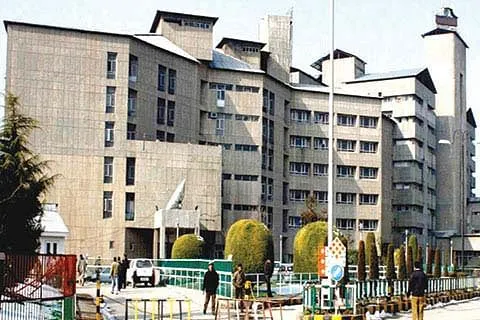Srinagar, Sep 22: The first ever issue of SKIMS Medical Journal on the Pandemic was released today. The publication details the scientific analysis of various facets of the pandemic ranging from its impact on the psyche of the people to the access of emergency surgical procedures.
A cross section of medical researchers have contributed to the Journal of Medical Sciences (JMS) SKIMS Soura – COVID in Kashmir. The Editorial is titled Stigma – the Other Pandemic, authored by the Journal Editor, DrShariq M Masoodi and DrArshid Hussain.
It compares the reaction of people towards SARS-CoV2 to the reaction of masses towards HIV/AIDS. It brings to discussion the stigma associated with Leprosy and Tuberculosis and how it took ages to remove this behavior and the resulting barrier to seeking treatment. While calling the era dark ages, the authors are of the opinion that the “dark” is here again. “It has nothing to do with ages . “There is the same streak of darkness again which is creating stigma and shame, thus impeding treatment”.
A paper titled Clinical Profile of Severe COVID19 in Kashmiri population from a single tertiary care hospital: Lessons from a 30 day Audit is the first to document the clinical profile of cases in Kashmir. It finds that over 52 percent of the patients admitted were over 60 years of age, 64.5 percent had an existing co-morbidity, thus concluding that older people with known pre-existing diseases had a higher risk of getting sick and dying of COVID19. The authors state that a significant proportion of these patients were treated with Dexamethasone, and presented with Pneumonia in both lungs. Significantly, the authors suggest that people with lower socio-economic profile may have a higher risk of getting exposed to the virus and were more frequently found in admitted patients.
The study Biochemical parameters of Coronavirus19 disease: markers of disease severity or mere indicators of viral inflammation calls for close monitoring of hematological markers which it states vary in people with mild disease and severe illness. It states that kidney injury was common in people with severe disease and many other parameters were also deranged. It has closely detailed out the levels of LDH, CRP and Ferritin in 530 patients and drawn the progression of these markers with the progression of their disease. “Luucopenia and lymphopenia are more common in patients with mild disease as compared to lymphocytosis in more severe group,” notes the study. It advocates monitoring of biochemical markers in better management of COVID19 in patients.
Many papers in the journal deal with the theme of mental health and COVID19. A paper “the Use of Telepsychiatry during Coronavirus Disease 2019” states that 3444 people sought tele-consultation for mental health during the pandemic from the department of psychiatry at GMC Srinagar. The number of males and females seeking help was similar but age-wise, the majority was in 20-40 year age group. A majority of those seeking treatment were diagnosed to have depressive disorders. Only a small proportion (6 percent) had an existing mental health issue, suggesting the gross impact of the pandemic on the mental wellbeing of people in Kashmir. It brings to notice the “huge gap” between mental health morbidity and treatment seeking due to hurdles posed by stigma, lack of facilities and aggravated by the pandemic.
The issue also highlights the gaps in treatment of emergencies, not just due to the lockdowns but due to the hospitals turning their surgical wards into COVID19 wards.






